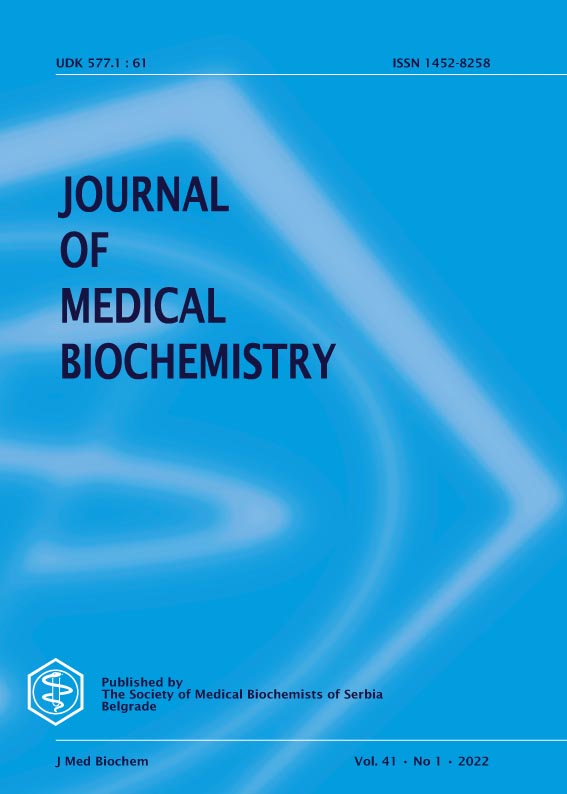Establishing reference intervals for von Willebrand factor multimers
Abstract
Background: von Willebrand factor (VWF) multimers (VWF:MM) methodologies are technically difficult, laborious, time consuming, non-standardized and results vary between laboratories. A new semi‐automated VWF:MM assay is available for routine use (Sebia). Due to lack of reference values for VWF:MM fractions, results interpretation can be challenging in some cases.
Aims: The aim of this study was to determine reference intervals for low molecular weight (LMWM), intermediate molecular weight (IMWM) and high molecular weight (HMWM) multimers.
Methods: Samples of 134 healthy individuals were analyzed. Acceptance criteria: no history of hemorrhagic episodes; no usage of any interfering medication for at least 10 days before blood collection; normal coagulation screening tests; normal VWF screening assay results; written consent provided.
Results: After outlier exclusion (n=3), done by Grubs double sided and Tukey methods, a total of 131 samples were analyzed statistically. The proposed reference intervals for VWF:MM were calculated for LMWM 10.4-22.5%, IMWM 22.6-37.6%, HMWM 45.6-66.6%.
Conclusions: Quantification of VWF:MM fractions, in addition to qualitative assessment of VWF:MM patterns, has the potential to aid in differential diagnosis of von Willebrand disease (VWD) subtypes. The reference values calculated in this study can be used in future research to establish clinical decision limits.
Copyright (c) 2021 Marika Pikta

This work is licensed under a Creative Commons Attribution 4.0 International License.
The published articles will be distributed under the Creative Commons Attribution 4.0 International License (CC BY). It is allowed to copy and redistribute the material in any medium or format, and remix, transform, and build upon it for any purpose, even commercially, as long as appropriate credit is given to the original author(s), a link to the license is provided and it is indicated if changes were made. Users are required to provide full bibliographic description of the original publication (authors, article title, journal title, volume, issue, pages), as well as its DOI code. In electronic publishing, users are also required to link the content with both the original article published in Journal of Medical Biochemistry and the licence used.
Authors are able to enter into separate, additional contractual arrangements for the non-exclusive distribution of the journal's published version of the work (e.g., post it to an institutional repository or publish it in a book), with an acknowledgement of its initial publication in this journal.

